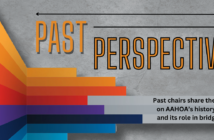As hoteliers faced funding depletion from the Paycheck Protection Program and the Economic Injury Disaster Loan program shortly after they were launched, the question shifted to what more could be done.
by ALICIA HOISINGTON
Over the past few months, the United States government has been working to provide relief to small businesses affected by the loss of business due to the COVID-19 pandemic. But the question remains: Has it been enough to help small-business hoteliers, who in many cases have seen record-breaking occupancy plummet to single digits almost overnight?
PPP LIMITATIONS
The Paycheck Protection Program (PPP), which was first launched in March, depleted its $349 billion in funding in less than two weeks. Reports started circulating that larger businesses were receiving millions of dollars through the program intended for small businesses. In fact, Shake Shack, which has 189 locations, announced its intent to return $10 million it had received. The confusion centered around whether the company was eligible to apply, with the CEO stating that the company applied because loans were open to any individual restaurant with no more than 500 employees.
Deborah Friedland, managing director of EisnerAmper’s Financial Advisory Services and Real Estate Groups, said some of the issues that arose from the first round of funding cropped up due to that lack of clarity around the program. As a result, some hotel owners faced some hiccups during the application process.
“I’m working with a couple of hoteliers who did not get applications in during the first round. There was an issue related to the employees and whose employees are they: Are they the owner’s or the [third-party] manager’s?” she said. “Because there was a scramble to get this legislation out, it wasn’t clear. Some lenders will just look at the face value and say you can’t apply.”
In late April, another bill passed that saw an additional $321 billion going to the PPP and $60 billion to the Small Business Administration’s Economic Injury Disaster Loan (EIDL) program. The SBA stopped accepting new applications for the EIDL on April 15 and announced Monday, May 4, that only agricultural business applications will be accepted for the program.
AAHOA Member and Past Chairman Bhavesh Patel, principal of ADM Hotels & Development, applied for funding from both the PPP and EIDL program during the first round. He went through his regional bank in New Jersey for the process, and it didn’t go off without a hitch.
“The application seemed like it went through, but then what happened was the website crashed,” Patel said. “We had to go back in and send them a manual copy that we had. But besides that, we didn’t experience many issues. We got approved.”
AAHOA Member Shreyas “JR” Patel, President and COO of Helix Hospitality, said his application process for the PPP was mostly smooth; however, he found that not many lenders were ready to go by the time the program opened up shop for applicants. As a result, he lost about 10 days waiting for the process to be sorted out, and his application was submitted the same week that reports began circulating that funds had been exhausted.

FGC/SHUTTERSTOCK.COM
“We spoke with different lenders we have relationships with, and we found one willing to take on multiple properties,” he said, adding that he ended up working with a regional bank that his company has a few loans with. “Then, we had to wait for them to iron out their internal process. After that, it was streamlined.”
IS IT ENOUGH?
Setting aside the fact that many hoteliers who were approved for these programs were given little clarity on when the funds would arrive, the question then became whether the money would be enough to help small businesses. The answer? Perhaps, on a short-term basis. And that doesn’t always build confidence during a time when no one is quite sure when normalcy will return in a global catastrophe.
“For us, it would be enough to get us through the next few months,” JR Patel said. “We are lucky enough to be geographically spread out. Our portfolio can balance out risk and a recovery time frame. Others who are in one market, it’s going to take longer.”
Bhavesh Patel, who applied for funding for a couple of the company’s properties, said the relief won’t be enough.
“It doesn’t even pay a quarter of it. If you have $100,000 in expenses and 25 percent is on payroll, the PPP doesn’t come close to taking care of that plus our other debt or property taxes,” he said. “Both loans offer just a little bit of relief, but nowhere close to where they need to be. It’s going to be a struggle.”
A report released by the American Hotel & Lodging Association (AHLA) in late April echoed those sentiments, saying the PPP loan limits cover less than one month of average hotel operating costs. AHLA stated the relief may not be enough to save more jobs, as industry revenues had dropped 20 percent compared to 2019 and were only expected to rise to 40 percent later this year. The association said that if hoteliers couldn’t pay their fixed costs, including mortgages, hotel jobs would continue to be lost. Thus, the report noted that 250-percent payroll loans would not be enough; instead, the PPP loan limits would need to be raised to almost 800 percent of covered costs.
Bhavesh Patel also pointed back to the reports of larger businesses being awarded funding from the programs. According to the SBA, the owner of the Ruth’s Chris Steak Houses chain got $20 million even though it counts more than 5,000 employees and had $468 million in revenue last year. The company, which has since agreed to return the money, was one of more than 50 publicly traded companies that had disclosed receiving approximately $250 million in PPP funds. Ashford Inc. also came under fire in late April for receiving $69 million, though the company has since said it would return the funds.
“The bigger companies got the brunt of the loans as we started hearing that [round one]funding had run out,” Bhavesh Patel said. “I thought this was going to be more for small businesses. It’s hurting the small businesses that are trying to keep people’s jobs in place.”
A SECOND WAVE
While the additional funding for the PPP and EIDL program was a start, he said there’s still more the government can do to help small businesses specifically.
“The government needs to somehow cover net debt, that’s the biggest thing. I know some properties if they have SBA loans, they’ve got six months of net debt paid for by the SBA,” Bhavesh Patel said. “But then these conventional banks that are willing to do deferments, but at the back end, you’re still going to have to pay those as well. Then, you have the CMBS loans that are just in deferral right now. The biggest thing is somehow if there’s a way for the government to pick up debt on small businesses, especially in the hotel business and the restaurant business because those are the ones that have been hit the most.”
JR Patel said the issue around CMBS loans is really the next part to the crisis for hoteliers, beyond getting funds in hands.
“The second issue is the looming CMBS crisis that will come out because of defaults where owners didn’t hit their debt coverage ratio or liquidity requirements,” he said. “Unless there is some understanding in the CMBS world, we’re not going to be able to work through the challenges. We’re going to see a lot of hard defaults in the next six to nine months. We have to get together with servicers. It’s one thing to keep everything open, but are we delaying another crisis?”
Besides that, Bhavesh Patel said if there’s a way for the government to address property tax relief, it would be critical for hoteliers. “I understand property tax relief is sort of hard because this is what the government relies on to keep government operations going,” he said. “But maybe there’s some relief on the county or school level as far as property taxes are concerned. I don’t know where else they can maybe chip in.”
Friedland agreed that more needs to be done. “I think whether it’s more funding or other ways to assist small businesses and the employees related to hospitality, I think you’re going to see there will be more need,” she said. “That changes if we get a vaccine or some type of treatment for COVID-19. That’s a game changer; everything’s off the table if a company finds a cure or a vaccine.”
SECOND ROUND OF PPP: WHERE DID THE MONEY GO?
According to a May 1 report on the second round of the Paycheck Protection Program released by the Small Business Administration, more than 2.2 million loans were given out to businesses. Following are five things to glean from the report.
- In terms of number of loans awarded and dollars issued, California received more than any other state (320,156 loans) with a total approved amount of more than $33.2 billion.
- New York, which approved the fourth-highest number of loans at 164,271, awarded the second-largest dollar amount of any other state at more than $17.6 billion.
- Of the total number of approved loans, the majority (70.8 percent) were for $50,000 or under. Less than 1 percent of the loans were for more than $5 million.
- Of the total dollar amount awarded, the majority (about 18.6 percent) was for the $350,000 to $1 million range. Overall, the average loan size was $79,000.
- In an interim update on round-two funding released on May 5, the SBA approved 2,378,057 loans worth more than $181 billion. With $320 billion appropriated for round-two funding, funds were continuing to go quickly.




